Marrakesh: the pink city – souqs and luxury (II) – Morocco
Marrakesh – the pink city and medina, the second day
Short Description. I went to the old medina, the so-called pink city with the area of Royal Palaces. Bahia Palace, Maison Tiskiwin, Dar Si Said, Badia Palace, Saadian Tombs, and finally, the Jewish quarter (mellah).
Long Description.
I wanted to take a taxi to the medina, but no taxi stopped at the bus stop where I was waiting. Eventually, a Moroccan stopped a taxi for me. I had to talk to the taxi driver harshly because he didn’t want to turn on the meter, but in the end, he did it. Moreover, the driver spoke only Arabic, so I had to show him on the map where to drop me. After I paid, he didn’t have a change to give me the rest, and I had to pay as much as he wanted.
Located between the old medina and the mellah, Place de Ferblantier was under works and had bumpy, upturned sidewalks. Nearby, Bahia Palace (‘magnificent’) comprised gardens with exotic vegetation, interior courtyards with colorful mosaics and fountains. Lounges and pavilions richly decorated from floors and walls to ceilings and wood soffit. A former harem for wives and 24 concubines, private apartments, hammam, private mosque, and a potato garden (aguedal). Wood panels, stained glass windows, stuccoes, and mosaics were elaborately worked, carved, engraved, or painted.
In the same neighborhood, there was Maison Tiskiwin – an old house with a Moroccan-style inner courtyard refurbished as a museum dedicated to the caravans that once crossed the Sahara Desert from Marrakesh to Timbuktu (through Algeria, Nigeria, Mali). Each room evoked the main stops along the caravan route. The museum exhibited tents, carpets, jewelry, wooden statues, folk costumes, and cooking items.
Dar Si Said – a traditional Moroccan riad refurbished as the Moroccan Art Museum, stood at the dead-end of a street with colorful carpets hung on the walls. The museum displayed objects of the ethnographic heritage of Marrakesh. Original carved wooden doors, marble basins for ablutions, ceramics, weapons, embroidery, and carpets. In the courtyard of the riad, a fountain hidden among colorful mosaics was rippling in the shade of exotic trees.
Mighty fortifications surrounded the 16th-century ruins of Badia Palace (‘the incomparable’). The royal complex (destroyed in the 17th-century) included pavilions, guest houses, gardens with lush vegetation, large water pools, a summer residence, and even a cave. The reconstructed Khaysuran pavilion on the southern side of the complex housed the Museum of Photography and Visual Arts, where it was exhibited a reconstruction of the former royal complex. Massive ruins illustrated the grandeur of the former palace and its geometric organization. From the top of the fortifications, you could see the pink-orange houses of the city (hence the name ‘pink city‘) alternating with exotic gardens on the backdrop of the High Atlas Mountains.
Behind the Badia Palace, a passage through a carpet shop shortened the way to the Saadian Tombs – a good excuse to attract customers to the shop. Moulay el-Yazid Square was the center of the Kasbah neighborhood, which was surrounded by fortified mudbrick walls. The main mosque stood in the middle of this modernly designed square and there you could find the Saadian Tombs, too. Next to the mosque, a narrow tunnel led to the magnificent gardens hiding the mausoleum of the Saadian dynasty – the largest royal necropolis of the 14th century in Morocco. The main hall of the tombs featured a hall supported by 12 columns covered with gold, marble, mosaics, and colored stuccoes.
The Jewish quarter (mellah) featured the tallest mudbrick buildings in the pink city. Even though few Jews lived there, their houses still had typical wrought-iron balconies overlooking the street. Restoration works were carried out in the mellah, and the streets looked like a general construction site. However, merchants displayed their goods among the debris. Nearby, on a side street, the Lazama Synagogue had an interior courtyard with blue shutters, doors, and curtains, and decorative tiles inside the synagogue.
Houses in the mellah – with primitive and very basic shops on the ground floor, seemed more ruined and dirty than the houses in the medina. A donkey tied to a small wagon on two wheels waited for its owner in front of a door with the number 48 written on it. In addition to that, a Jewish cemetery (miaara) had been developed on the outskirts of the mellah. The cemetery had cone-shaped white tombstones crammed in a limited space. Some tombs were simple, some had Hebrew inscriptions. Shrubs and grass grew in abundance and invaded the spaces between the graves.
In the evening, I again met with Mohammed in Djemaa el-Fna Square, and we strolled among the food stalls. The following day, he had to leave with new clients to the desert, and on the way to the airport (where he picked them up in the evening), he dropped me at Naima’s house.
Marrakesh, the third day – Jardin Majorelle and hammam
Short Description. I visited the Majorelle Gardens, then we had lunch at Naima’s adoptive family. In the afternoon, I went with Imame to a neighborhood hammam, and overnight I stayed at Zineb’s family.
Long Description.
The luxurious Jardin Majorelle was created as a sanctuary and botanical laboratory with exotic plants from all over the world. Palm trees, cacti, and bamboos of all kinds grew abundantly in the garden sprinkled with pools and waterways. A raw-blue color dominated the whole compound, including the Art Nouveau facades of the garden villa, as well as the water pools’ edges and the pergolas. There, Moroccan families came with their children for a stroll in the garden, while tourists hastily photographed everything. Also, the villa in the garden housed a Berber museum dedicated to this ancient ethnic group in North Africa.
Close to Jardin Majorelle, Naima’s house sat in a neighborhood with French-style villas of orange-pink color (the emblematic color of Marrakesh). The villas featured modern architecture typical for the beginning of the 20th century. Abundant vegetation outflew from their courtyards in the street. And numberless palm trees were proof that you were in Africa, while locals dressed in djellabas confirmed this truth.
Naima didn’t go to work that day because they celebrated the Muslim New Year in Morocco. Therefore, she invited me to have lunch with her adoptive family, and then we planned to go with her sister, Imame, to a hammam. We took a bus and descended in Menara III, a neighborhood with sordid and desolate buildings on the outskirts of the city. Naima’s family lived in a flat furnished in traditional Moroccan style – with silk-upholstery sofas arranged on three sides of the living room. Only Imame and Qautar (Naima’s sisters) lived with their adoptive mother there. All of the other brothers had moved from home as they grew up. Imame was quite a tomboy, Qautar was more feminine, and they both giggled with Naima. For lunch, the girls prepared lamb ribs with potatoes and salad, paired with Coca-Cola and orange juice.
In the afternoon, Naima accompanied me and Imame to the hammam. Even though Imame had just been to the hammam a few days before, Naima convinced her to accompany me. Most importantly, we carried with us a large bucket filled with all kinds of items used at the hammam. For instance, a plastic rug, two small buckets, a small chair, different shampoos, and soaps. Naima didn’t enter with us because she didn’t like going to a hammam.
The hammam was composed of three increasingly hot successive chambers. Most women were naked or wore underwear. They washed one another, waxed, or simply relaxed. We found a bit of room only in the hottest chamber, where I heroically resisted until Imame brought water from the tap in the big bucket. We unrolled the plastic rug on the floor and put the plastic chair on the rug (on which I sat). Then, we took water from the big freshly-filled bucket with the two small buckets and we washed.
Imame offered to wash my back, but I didn’t dare to return the favor. It seemed an unusual service for me. Initially, we had planned to stay longer at the hammam. However, I couldn’t resist the intense heat, and I backed down when I saw the dirty water, mixed with freshly shaved pubic hair, flowing from other women beneath our feet. Therefore, Imame quickly washed and Naima found herself with us at home in less than two hours.
Naima and Imame decided to go to the Menara Gardens – a large park with a large pool with brownish water (without fish) and some trees lined on its margins. Moroccan families came for picnics, couples for a stroll, young people for having fun (without alcohol). As we were strolling, Naima showed me a young couple holding hands. Then she told me that if the girl wore a hijab (so she was practicing the Islam religion), she shouldn’t have gone in public with her boyfriend.
In front of the Menara Gardens, Naima put me in a shared taxi that drove me to the outskirts of Marrakesh, in the Massira II neighborhood. There, Zineb (another girl from Couchsurfing) was waiting to put me up. Unfortunately, the driver charged me more after he took me right in front of Zineb’s home. The streets of the neighborhood didn’t have asphalt. There was dust everywhere.
The building where Zineb lived had dirty-gray walls. However, Zineb’s family apartment was clean and without furniture at all. The walls of the hall and kitchen had faience decorated with flowers and large diamonds. As Moroccans usually sat down and slept on the floor, the living room had only a large carpet and a few cushions leaning onto the wall.
Zineb was a student. She liked to go to university because then she got rid of her mother, who drastically controlled her. She had never left Morocco and asked me a thousand questions. In the evening, she served me a simple harira soup and arranged a place for me to sleep on a mattress in the living room.
Marrakesh, the fourth (last) day – a bit of medina
Short Description. I went with Zineb to the old medina, then visited the Maison de la Photographie. In the evening, I went out with Naima in the Ville Nouvelle at a modern restaurant-cafe.
Long Description.
Zineb’s mother baked round loaves of bread in the oven. When she finished making the bread, she served me fresh bread with honey for breakfast. Then, she prepared a tajine with lots of onion, cooked in a special ceramic vessel placed on a small stove with embers. Before we left to the medina, Zineb took me to the desolate rooftop of her house, packed with satellite antennas. From there, we could see the vast panorama of the outlying lugubrious suburbs of Marrakesh. Fortunately, we could see the ridges of the High Atlas Mountains on the horizon.
Zineb beckoned a shared taxi that took us to the medina. The bustling medina seemed the same, but the colors, goods, and smells were different. Zineb didn’t quite know what to show me in the medina. Therefore, she said there were only old houses in the medina, nothing special. Before we parted, she invited me to have lunch with her mother and a family friend, but I turned her down. She seemed a little upset that I only stayed for one night at her place instead of three nights as I initially requested.
I served a daily menu at a snack bar in the street. Tajine, salad, a loaf of bread, semoule, Moroccan tea with mint leaves – everything for only 60 Dirhams. After that, I went to the Maison de la Photographie – a funduq set up as a gallery with thousands of old photographs from Morocco during 1870-1950. On the rooftop, a large terrace with pink flowers overlooked the rhythmic silhouettes of the minarets on the backdrop of neglected and abandoned roofs. Late in the afternoon, I managed to get on the right bus home and to get off at the correct bus stop thanks to the GPS.
In the evening, I went out with Naima to a very modern restaurant-cafe in Ville Nouvelle. We pampered ourselves with fruit shakes, burgers, and cake. However, Naima didn’t let me pay anything, and after we left, she donated half of her burger to a beggar on the street.
The pink city of Marrakesh (II) is the continuation of the first travelogue about Marrakesh, Morocco. The first post can be found at the following link The pink city of Marrakesh (part I). And here are all the Travelogues from Morocco (x21).
Have you been to Morocco or plan to go there? Leave a comment below this post and tell me what you liked in Morocco or what you want to see there.
Want to subscribe to my travelogues? Just leave your email in the subscription form below, and you’ll be notified when I publish a new post.
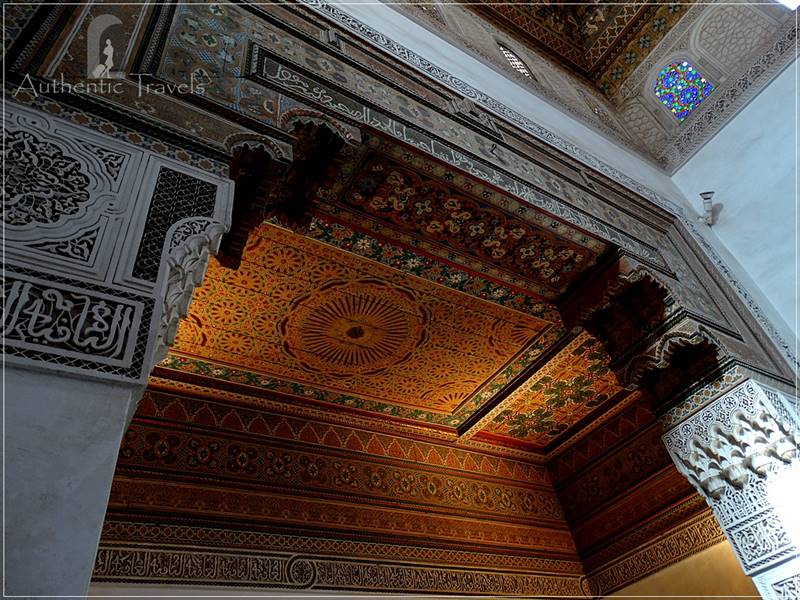
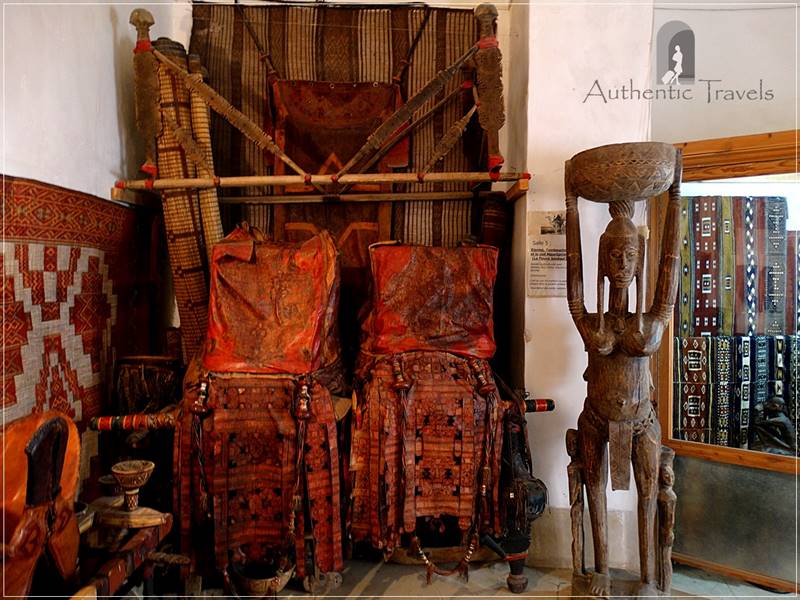
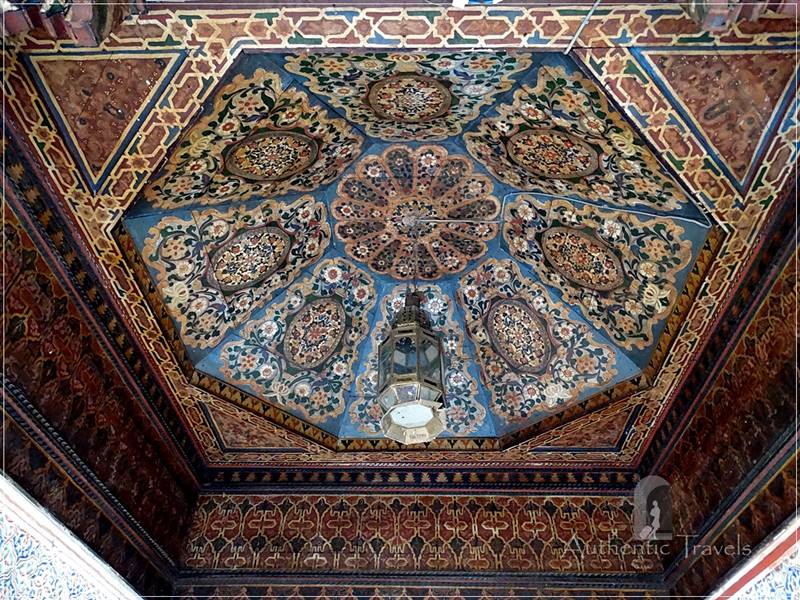

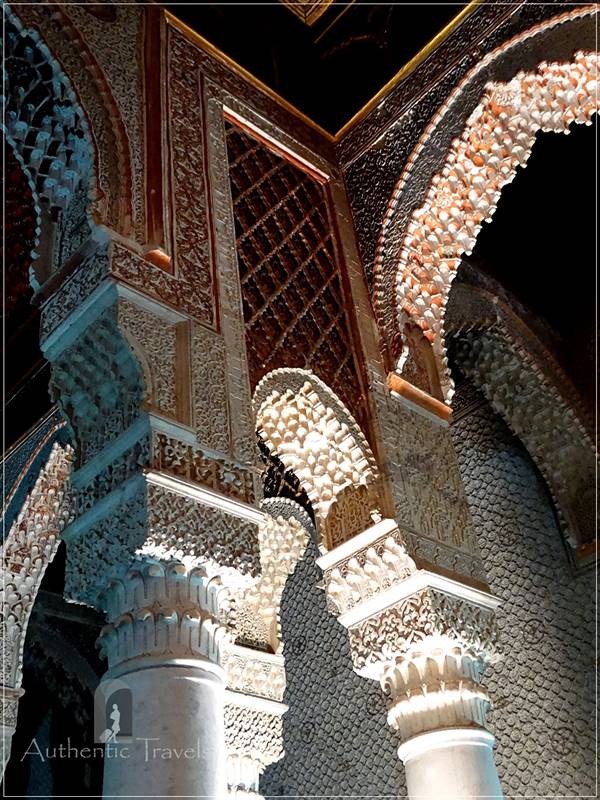
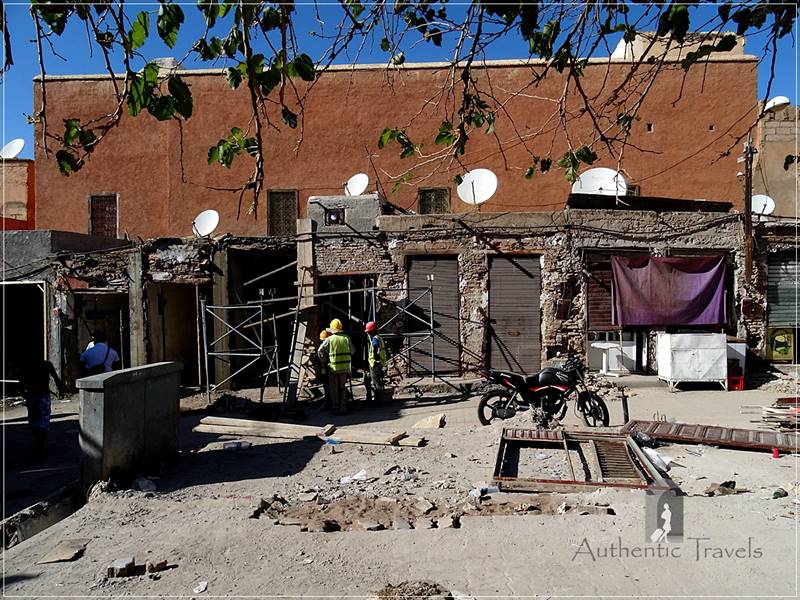
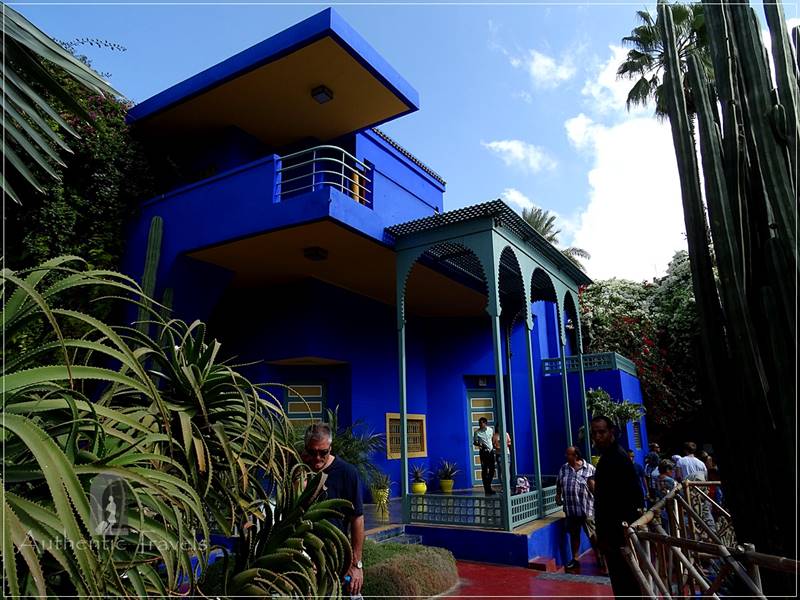
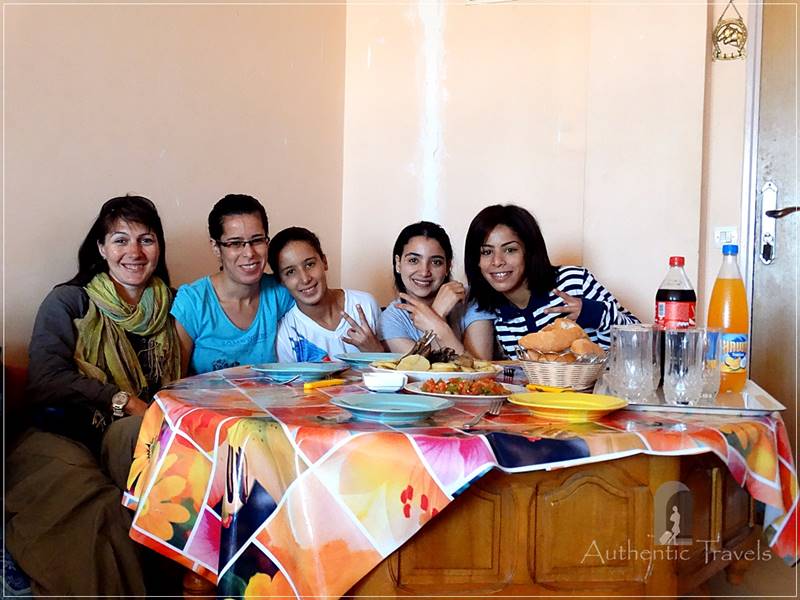
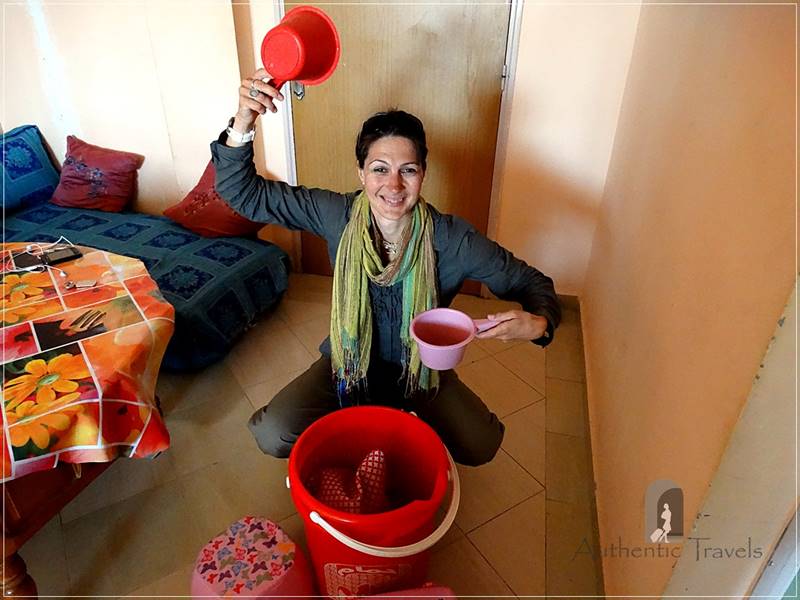
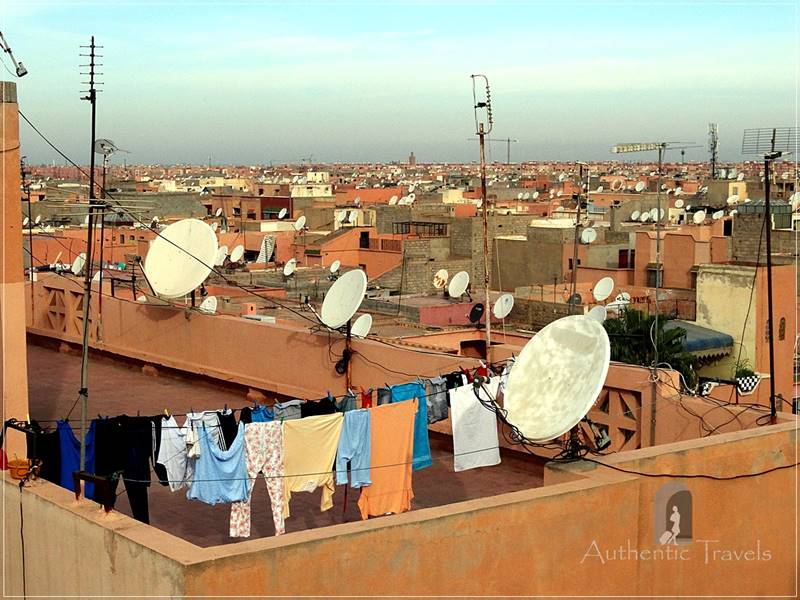
I love how you experienced Marrakesh like a local! When you first described the hammam, it sounds similar to a Japanese onsen. Then I realized that you bathed in a hot room versus bathing then then soaking in a hot spring (for an onsen). I’m not sure how comfortable I would feel with the heat. Regardless, I Would love to visit Marrakesh one of these days to see the architecture and walk around.
The hammam is a great experience but the first time is very challenging. I would love to experience an onsen one day.
I love the architecture of the ceiling and wall. Haha, it made me laughed at your picture it reminds me of the Philippines. It seems we have a little similar culture. I’ve been reading a lot about Marrakesh, Morroco and it is honestly a great country. I hope we can go there someday.
Marrakesh is packed with intricate wood carvings and colorful mosaics.
I have been in two minds about visiting Morocco. I live in the Middle East and usually like to visit places which are very different from where I am and Morocco seems like it has a lot of similarities with the UAE. The old medina seems like an experience one must have in Marrakech though I can imagine it must be crowded and chaotic and an assault on all the senses! I am sure I would really like the architecture there, Bahia Palace looks amazing from the inside!
Yes, indeed, the medinas in Morocco are pretty similar with some old structures you find in UAE – like the Bastakia in Dubai. However, the ones in Morocco are more authentic. You will find little modern architecture in Morocco whereas UAE is packed with skyscrapers.
It sounds like you had an interesting trip to Morocco, experiencing it like a true local. While I would love to visit Morocco to experience the culture, I’m not sure I would feel safe being a solo female traveller. I’m not sure I would have the courage to try the hammam but it sure sounds interesting.
I went with a local friend to the hammam so it was not so weird after all.
I want to visit Morocco and have an experience like yours. OK.-maybe not the hammam, that sounds like it requires me to expose myself more than I am comfortable with. Still the medinas would be interesting to visit too.
There are also luxury hammams you can try, with nice atmosphere and not crowded with locals. After going to this local hammam, I also went to a touristy, clean, stylish one. Whereas the basics is the same (pools, massage, scrub etc), the atmosphere was completely different.